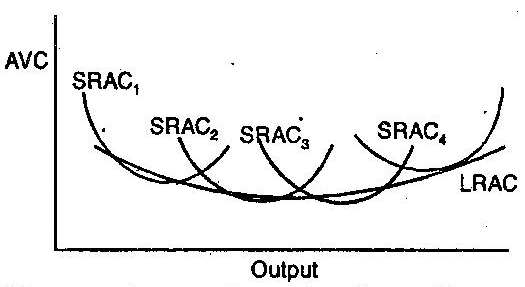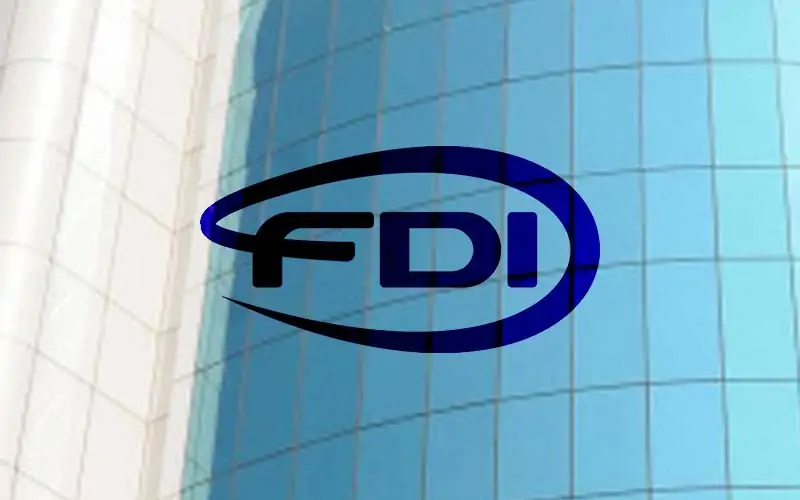Long-Run Average Cost Curve
The curve long run average cost curve (LRAC) takes the scallop shape, which is why it is called an envelope curve. As the long run average cost curve is derived from the short run average cost curves.
And it is known that all inputs are variable, thus the firm can have a number of alternative plant sizes and levels of output that it wishes.
For such every alternative level the firm may have separate SRAC’s. Joining the slopes of all the average cost curves derives the LRAC curve.
Also read | The Liberalization of Foreign Investment Policy of 1990’s.
As shown in the following figure, the slopes of the short-run average cost curves leads to the attainment of LRAC which is a scallop shaped which is why it is called the envelope curve.

We can observe from the above figure that although many SRAC curves exit however, only one point of the small arc of each short run cost curve will lie on the long run average cost function.
Also read | The Least Cost Combination of Factors Isoquants.
Which makes the LRAC a smooth U-shaped curve, which reflects the laws of returns to scale.
According to which the cost per unit of production decreases as plant size increase’s due to the economies of scale, which the larger plant size makes possible.
It is in accordance with the long run average cost curve is the long run marginal cost curve.
Also read | The rationale for economic reform.
The LRMC intersects the LRAC at its minimum point, which also happens to be the minimum point of the short run average cost curve. It is at this point that the following relationship is derived:
SRAC = SRMC when LRAC = LRMC and it is because of the fact that LRAC reflects the laws of returns to scale and the LRMC reflects the long run cost resulting from the production of the last unit of output which does not make the LRMC a U-shaped or scallop shaped.




